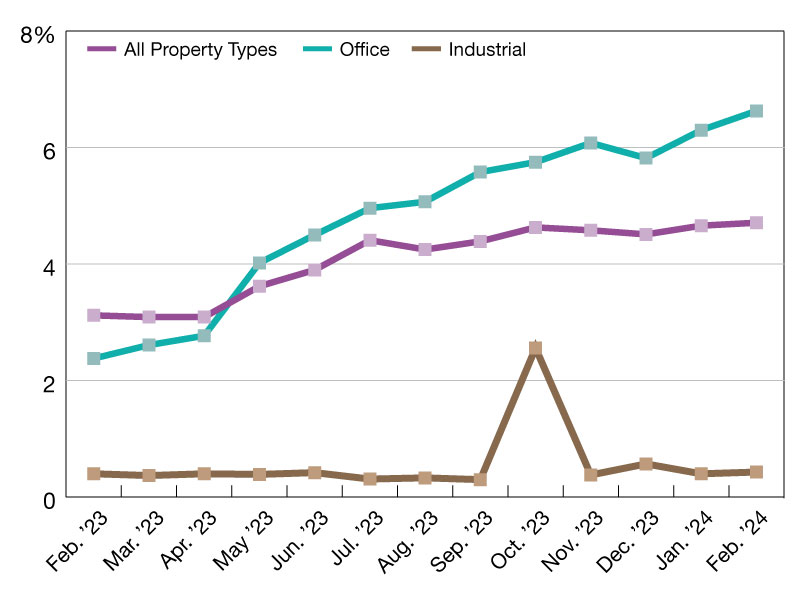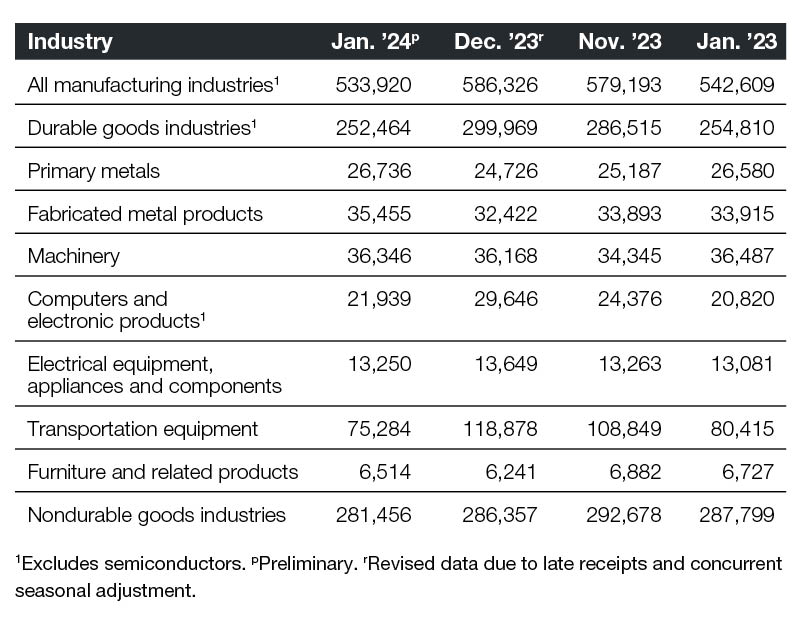Life Company Lending Picks Up the Slack
Insurance companies expect another robust year for commercial real estate loan originations, but as they tick another year off the cycle, they’re keeping a close eye on the market.
By Amanda Marsh

TIAA provided $320 million to Macerich and Taubman Centers Inc. for the acquisition of Country Club Plaza, a 1.3 million-square-foot
mixed-use, open-air development in Kansas City, Mo.
Insurance companies expect another robust year for commercial real estate loan originations, but as they tick another year off the cycle, they’re keeping a close eye on the market.
“When you look at underwriting and the current state of the markets, we’re still in a healthy environment,” said New York Life Real Estate Investors Managing Director Tim McGinnis. “However, we’re aware of where we are in the cycle and that the markets are maturing a bit.”
Despite that slightly higher degree of caution, leading life insurance companies expect this year’s originations to be on par with 2015, if not higher. Borrowers are relying on life companies to pick up the slack in originations by other sources, notably in CMBS, which declined nearly 44 percent during the first half to $30.7 billion. Life insurance companies originated a record $76.2 billion worth of loans last year, a 25.5 percent year-over-year increase, JLL reported in its second-quarter Investment Outlook. The pace continued into the first quarter this year as volume totaled $14.6 billion, up 21 percent year over year. Several major insurance companies told CPE that they each expect to originate upwards of $5 billion in real estate loans before 2016 is through.
Life companies also picked up the pace of their mortgage allocations in 2015. Fitch Ratings reports that those allocations rose 7.7 percent last year, up from 5.8 percent in 2014. That hints at more lenient underwriting, according to Nelson Ma, a Fitch director. “Loan selectivity and credit discipline may start to differentiate investors further down the road, as U.S. life insurers have increased their allocations to mortgages despite an increase in originations of riskier loans and property types,” Ma said in a statement at the time of the report’s release.
Even as life companies flex their muscles, they acknowledge that for qualified sponsors, debt is generally a buyer’s market. “Given the historically low interest-rate environment, it’s a great time to be a borrower,” as McGinnis puts it. Despite some pullbacks by other capital sources, insurance companies face keen competition not only from one another but commercial banks and even conduits, which appear to be getting back in the game after a dramatic first-half decline in originations. Fannie Mae and Freddie Mac are typically powerful multifamily forces.
As life companies and their competitors look for an edge, borrowers may be able to take advantage of creative deal structures. New York Life recently closed on a large multifamily portfolio in Georgia and Florida sponsored by the ECI Group for $228 million. It was a unique structure, McGinnis noted, as it included both seven-year fixed- and floating-rate components that allow the borrower flexibility in managing the portfolio.
“That’s a type of product borrowers find appealing today,” he said.

MetLife recently provided Chesapeake Lodging Trust with a $150 million mortgage loan on the Hyatt Regency Boston.
To be sure, investors that can bring trophy properties to the table will likely find offers of attractive terms from life companies. In June, Chesapeake Lodging Trust reported that it had refinanced the Hyatt Regency Boston via a $150 million fixed-rate mortgage originated by MetLife. Terms included a 4.25 percent interest rate and a 30-year amortization. The new loan generated considerably greater proceeds than its predecessor, a $95 million loan that Chesapeake prepaid earlier this year, explained Douglas Vicari, the REIT’s executive vice president & CFO, in a statement. Proceeds from the new loan were earmarked for paying down borrowings under Chesapeake’s revolving credit facility.
For its part, TIAA is focused on tempering rental-rate growth expectations, further cap rate compression and realistic valuations, among other market and underwriting trends, explained Ted Norman, head of commercial mortgage origination. “We want to pay close attention to a property’s sustainable net operating income,” he said.
At TIAA, originations rose 48 percent last year to $5.5 billion, including core senior mortgages, subordinate debt and $325 million in mortgages issued by TIAA Direct, its federal savings bank.
“This year, the plan is to do similar volume levels,” Norman said.
New York Life favors institutional-quality, well-located office, multifamily, retail and industrial backed by strong sponsorship. A recent example is a $48 million loan for the Promenade at Crocker Park, the 276,000-square-foot retail portion of a mixed-use property in Westlake, Ohio. New York Life provided the 15-year fixed-rate financing for Stark Enterprises, the asset’s owner and developer.
Northwestern Mutual is concentrating on single-asset mortgages of $15 million or more—to $500 million-plus for large portfolio deals secured by general-purpose income property, noted Joe Miller, managing director of production. Sectors include multifamily, office, retail, industrial, senior housing, student housing and self-storage facilities; Northwestern Mutual also offers construction-to-permanent financing, often secured by multifamily assets.
Beyond the ‘Salty Six’
While all three life companies are active in primary markets, Northwestern Mutual is open to opportunities throughout the U.S. Highlights this year include providing $563 million in financing for three office properties comprising 1.6 million square feet in Boston; Washington, D.C.; and Miami. Although a single client owns all three assets, Miller said, the loans were not cross-collateralized.

Promenade at Crocker Park, the retail portion of a high-end, mixed-use property in Westlake, Ohio, garnered a $48 million loan from New York Life.
Beyond the “Salty Six” coastal markets—New York, Boston, Washington, D.C., San Francisco, Los Angeles and Seattle—New York Life has a strong appetite for cities like Denver, Dallas, Austin and Chicago, as well as smaller markets that offer strong STEM industries (science, technology, engineering and mathematics), such as Raleigh, N.C.
TIAA focuses on the long-term sustainability of supply-demand fundamentals, so it gravitates toward larger markets in the industrial, office, retail and multifamily sectors. Favored office product tends to be in major central business districts or close-in, highly amenitized suburbs, as well as medical office buildings. Retail targets include grocery-anchored centers, dominant regional malls and urban retail.
In multifamily, new Class A product is attractive, but TIAA also seeks opportunities in student housing or acquisitions of Class A-minus product from the late 1990s to mid-2000s that can be successful without commanding the highest rents in their markets.
Compared to a few years ago, TIAA is allocating more dollars to the mortgage space, which continues to offer good value compared to other fixed-income products, Norman noted. One of TIAA’s largest deals so far this year was a $320 million, 10-year mortgage financing for Macerich and Taubman Centers Inc.’s $660 million purchase of Country Club Plaza, a 1.3 million-square-foot mixed-use, open-air development in Kansas City, Mo.
While location is important, Norman added that sponsorship by seasoned, best-in-class operators is critical. Requirements vary by deal. For instance, transactions could be structured around lease expirations or a property’s reserves. Over the past year, TIAA has done more value-add lending, for which sponsors need a track record of executing a realistic, market-supported business plan for the asset.
What borrowers can expect at Northwestern Mutual Real Estate’s table: five- to 25-year terms; amortization structured to meet client needs; an interest rate priced over U.S. Treasury yields; a maximum 75 percent loan-to-value; a minimum debt-service coverage ratio of 1.25; and deposits required at application with earnest money refunded at closing. Liability is typically non-recourse, except for standard carve-outs and environmental.
With today’s unusually low rates in mind, TIAA looks ahead several years at a property’s potential to refinance at maturity in a normal interest-rate environment and focus on the exit. In TIAA’s bank program, loans tend to be floating rate, with terms of three to five years or three years with two one-year extensions. Fixed-rate terms usually range from seven to 15 years, and subordinate debt financing comprises both fixed and floating rates.
Originally appearing in our September 2016 issue of CPE.







You must be logged in to post a comment.